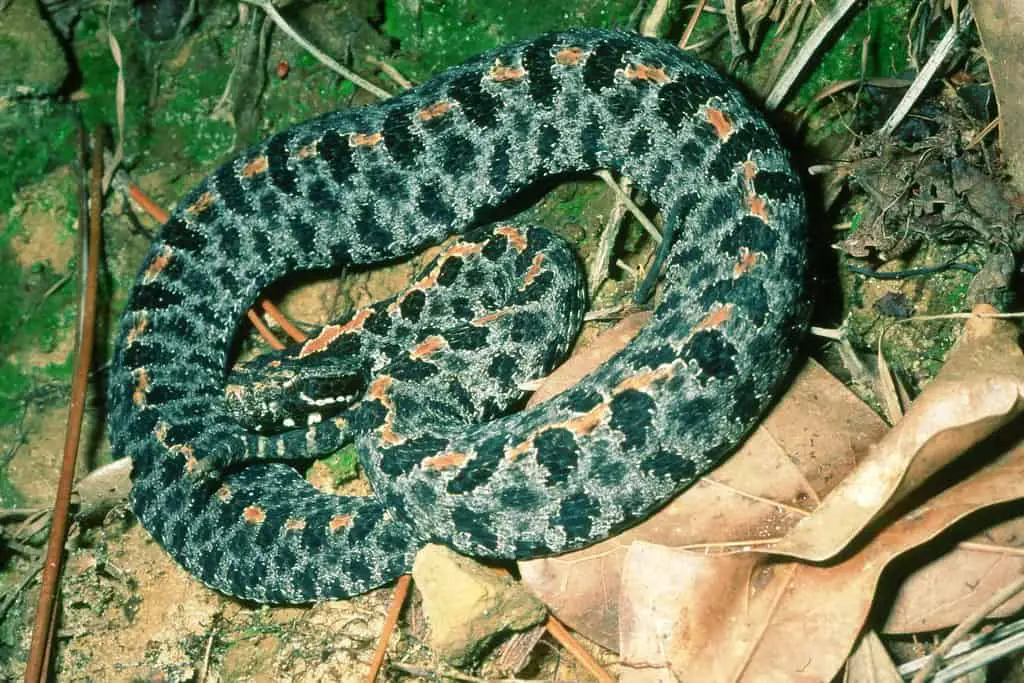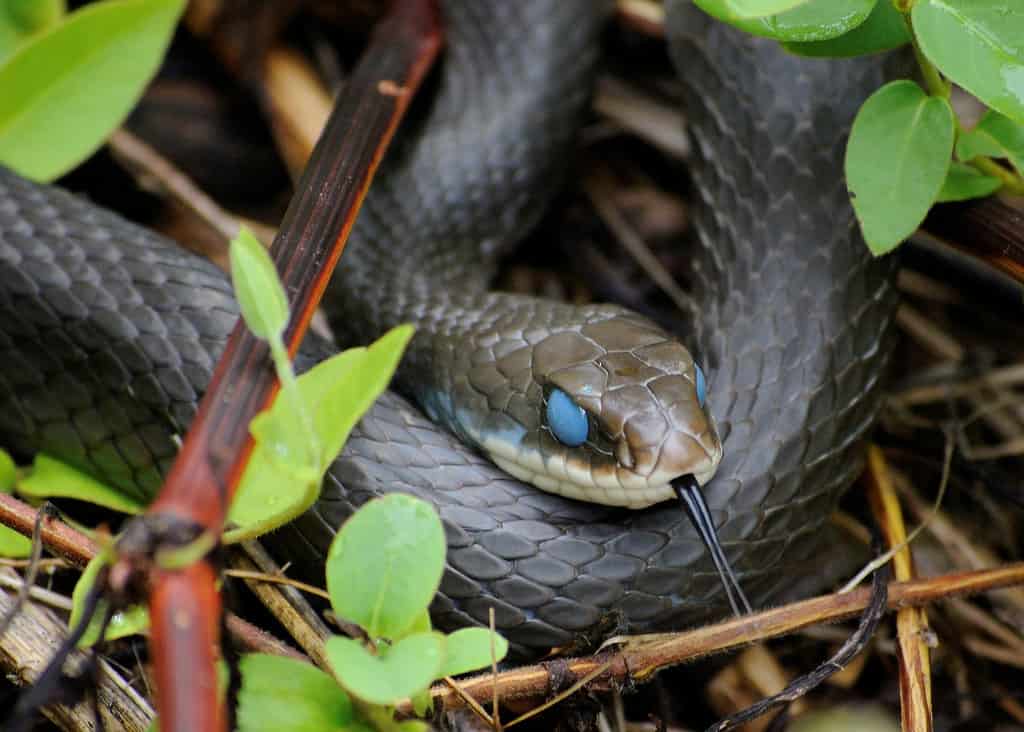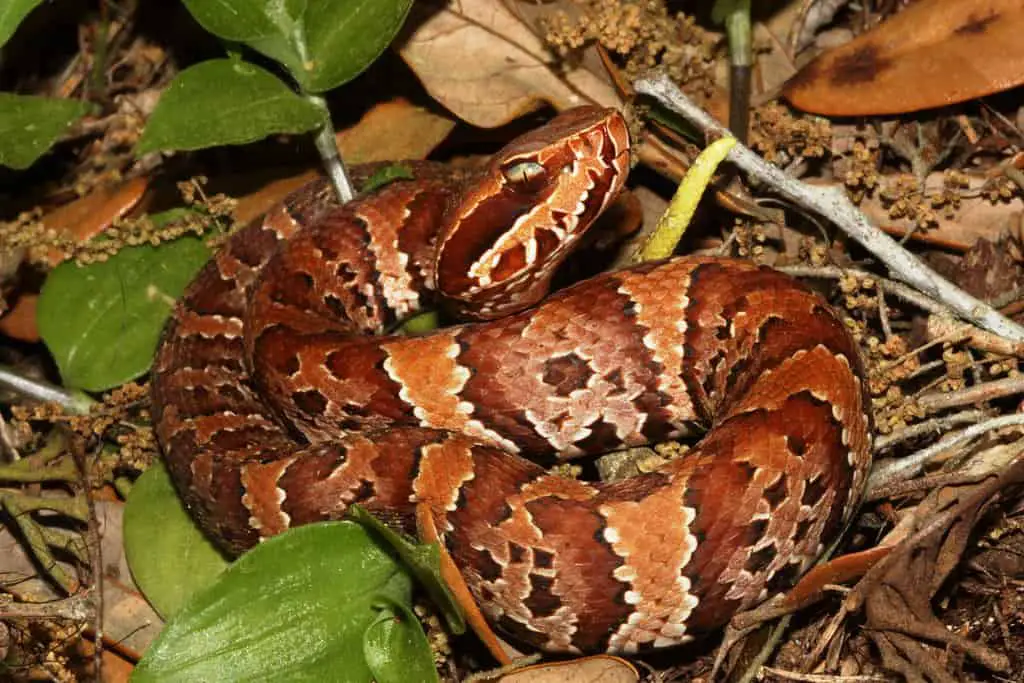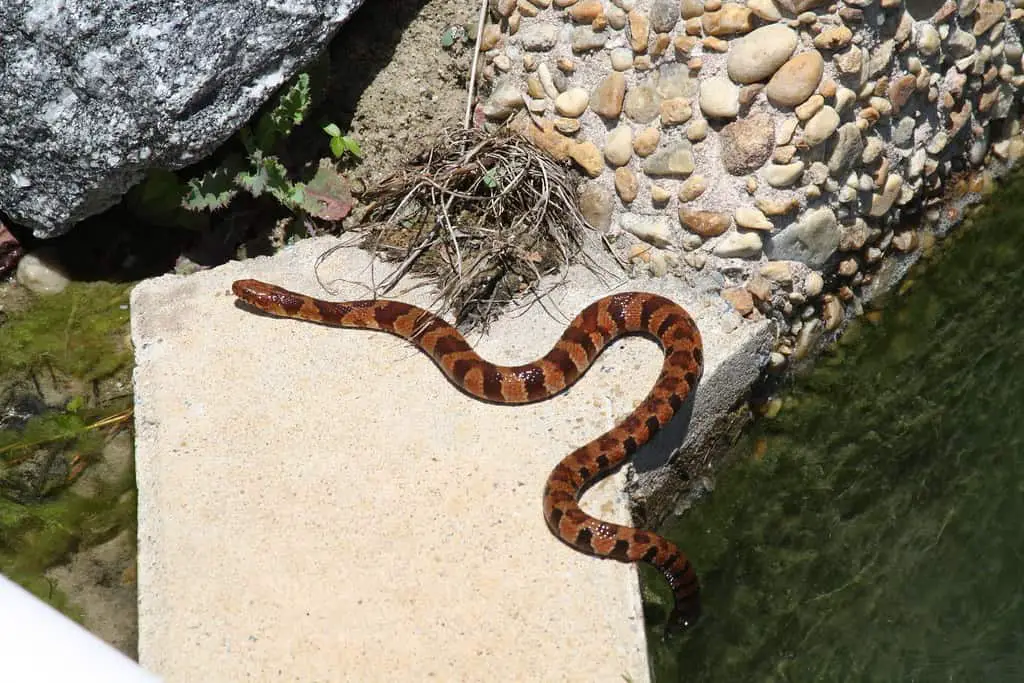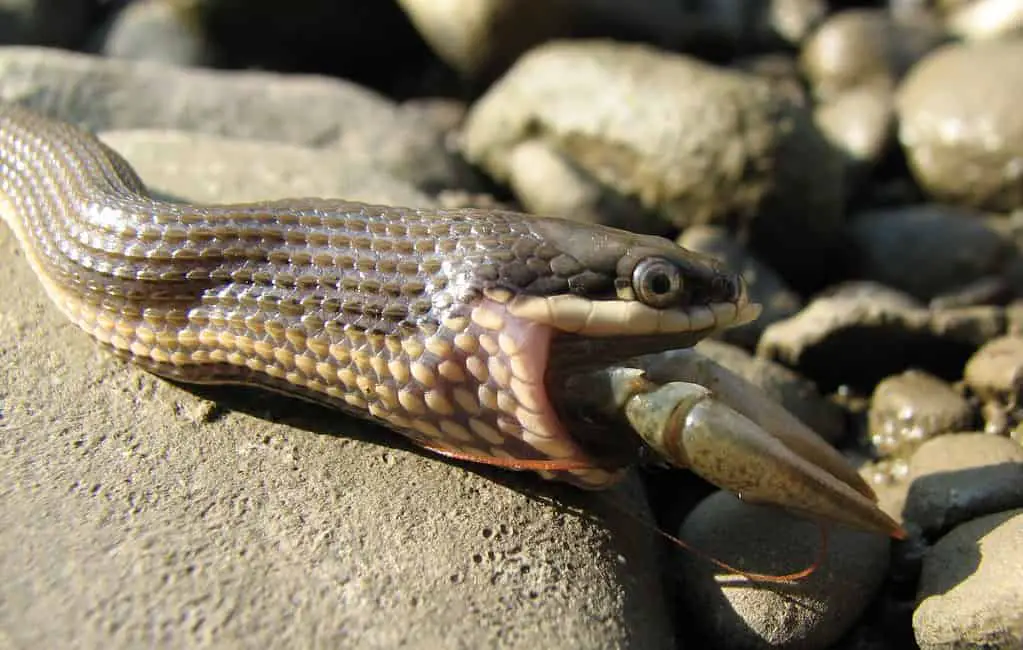Arkansas snakes are a natural part of the state's landscape despite all the threats they pose. They are found in almost every part of the state. Some of the most common snakes are the Pygmy rattlesnake, the Cottonmouth, the Midland Watersnake, and the Racer snake. All of these are native to Arkansas.
Pygmy rattlesnake
Several snake species live in Arkansas, including a pygmy rattlesnake. The pygmy rattlesnake is a venomous pit viper most commonly found in the southeastern United States.
The pygmy rattlesnake can be as small as four inches long. It is one of the smallest rattlesnakes in the United States. It is found in Arkansas, Louisiana, Tennessee, and Alabama.
The pygmy rattlesnake has a high-pitched rattle that can be heard only a few feet away. The rattle is a luring device that the snake uses to lure prey. The rattle is often broken off after a couple of years.
The pygmy rattlesnake's venom is hemorrhagic. The venom is injected into the prey through fangs. The rattlesnake is also sensitive to infrared radiation, and the pits detect the direction of warm-blooded prey.
Racer snake
Unlike many snakes, Arkansas racer snakes are non-venomous. They are not dangerous, but they can be aggressive. It is best to handle them carefully. They can travel up to four miles an hour and bite if surprised.
The Arkansas racer snake is one of the longest snakes in the state. It has a rounded, slightly slender head with medium-sized eyes. A single-colored ring around its body also characterizes it. The underside may be yellow or brown. It can be bluish or metallic.
The Arkansas racer snake is a member of the Crotalinae family. It eats slugs, insects, frogs, and small birds. It is active in the daytime in grassy areas and forests. It also eats terrestrial snails and centipedes. It is a relatively common snake.
Cottonmouth
During the spring and summer, cottonmouth snakes in Arkansas live in various habitats. They are primarily found near water, where they eat fish, frogs, and small mammals. They prefer to bask in the sun on rocks but will also hunt at night.
Adult cottonmouths are dark brown or olive, with a black line from the snout to the neck. The tail tip is bright yellow. The dorsum has 10 to 15 dark transverse crossbands. The upper lip is white. The belly is mottled with black or brown blotches.
The juvenile cottonmouth is lighter in color, with two heat-sensing pits. Its head is triangular. The belly is cream-colored, with dark blotches. The snake also has round pupils.
The timber rattlesnake is another pitviper that can be found in Arkansas. It is a giant, heavily-bodied snake that can reach 189 cm in length. It has a reddish-brown vertical stripe on the back and a yellowish-grey color. It also has arrow-shaped markings.
Midland Watersnake
Several venomous snakes inhabit Arkansas, including the Copperhead, Red-bellied Snake, and western cottonmouth. These snakes have specialized jaws for consuming small insects and invertebrates. These snakes are primarily nocturnal, making them ideal for night hunting. They also consume frogs, small snakes, amphibians, and other vertebrates.
The copperhead is the most common venomous snake in Arkansas. They can be found in various habitats, including brushy hillsides and riparian areas. They are also known to hibernate in large groups.
These snakes are native to the Coastal Plain of southern states and prefer wooded hillsides. They are also known to reside in sphagnum bogs. The American alligator is another venomous species that are native to Arkansas. This species has heat-sensing pits and a bright yellowish-green tail.
Queen snake
Among the most common snakes found in Arkansas is the queen snake. These snakes are part of the colubrid family and are nonvenomous. They live in rivers, streams, and other waterways. The queen snake is usually less than two feet long. Besides feeding on crayfish, they also eat small fish and tadpoles. They are also known to spray putrid-smelling musk whenever they are threatened.
These snakes can be identified by their dark coloration, usually brown. They are usually solitary creatures, but they will mate with other queen snakes. Their bodies are highly permeable to water, and they can lose their water content instantly. The water snakes will quickly dive beneath the surface to escape when disturbed.
These snakes are generally nocturnal, but they will also be found basking in the sun and hanging in trees. They will also spray their feces. They will often wait for a crayfish to molt before eating it. This makes the crayfish easier to digest.
-
How Indian Mall in Jonesboro, AR, Went From Shopping Landmark to Redeveloped Site
Indian Mall Beginnings and Early Vision October 1967 marked the quiet beginning of something big for Jonesboro. A few storefronts opened early inside a still-unfinished complex on Caraway Road: Sears, Blass, and the five-and-dime TG&Y among them. The idea of an enclosed, air-conditioned shopping center was still new to Arkansas, but the crowds came anyway,…
-
The Untold 150-Year Story of the Arlington Hotel in Hot Springs, AR
Ghosts in the Marble Ask someone about Hot Springs, Arkansas, and the name Arlington Hotel slips into the conversation as if it's always belonged there. Its lobby hums with old stories, and the marble underfoot has seen everything from velvet dresses to suitcases with racing stubs tucked inside. People say the air feels thick with…
-
A Real Look at Things to Do in Fayetteville, Arkansas
Why Fayetteville Works for Free Time There's something about Fayetteville that slows the clock down, without making it feel like nothing's happening. You can walk a trail at 8 a.m., listen to live music before lunch, and be deep in aviation history by afternoon. Whether you're looking for clear air, green space, or a quiet…
-
Inside the Wild History of Crescent Hotel, Eureka Springs, AR
The Last Grand Hotel on the Hill They built it for the millionaires. The Crescent Hotel opened in 1886, perched high over Eureka Springs, Arkansas, where fresh air, high ceilings, and natural springs were supposed to fix what ailed you. But something else happened. The plans got too big, the investors lost steam, and the…
-
What's Hiding in Arkansas? These Creepy Stories Will Give You Chills
Whispers in the Dark: Arkansas' Most Haunting Legends Arkansas has always had a way of holding onto its stories. Some are written in history books, tied to the Civil War or frontier days, while others live on in whispers, passed from one generation to the next. These are the stories that creep into quiet conversations,…
-
Park Plaza Mall in Little Rock, AR: From Foreclosure to Revitalization
Origins and Early Development (1960-1980s) Park Plaza Mall started its journey in 1960 as Little Rock's first major shopping center, initially known as Park Plaza Shopping Center. Located on West Markham Street, it was an open-air facility, which was a bit of a novelty at the time. The complex wasn't just for shopping - it…

